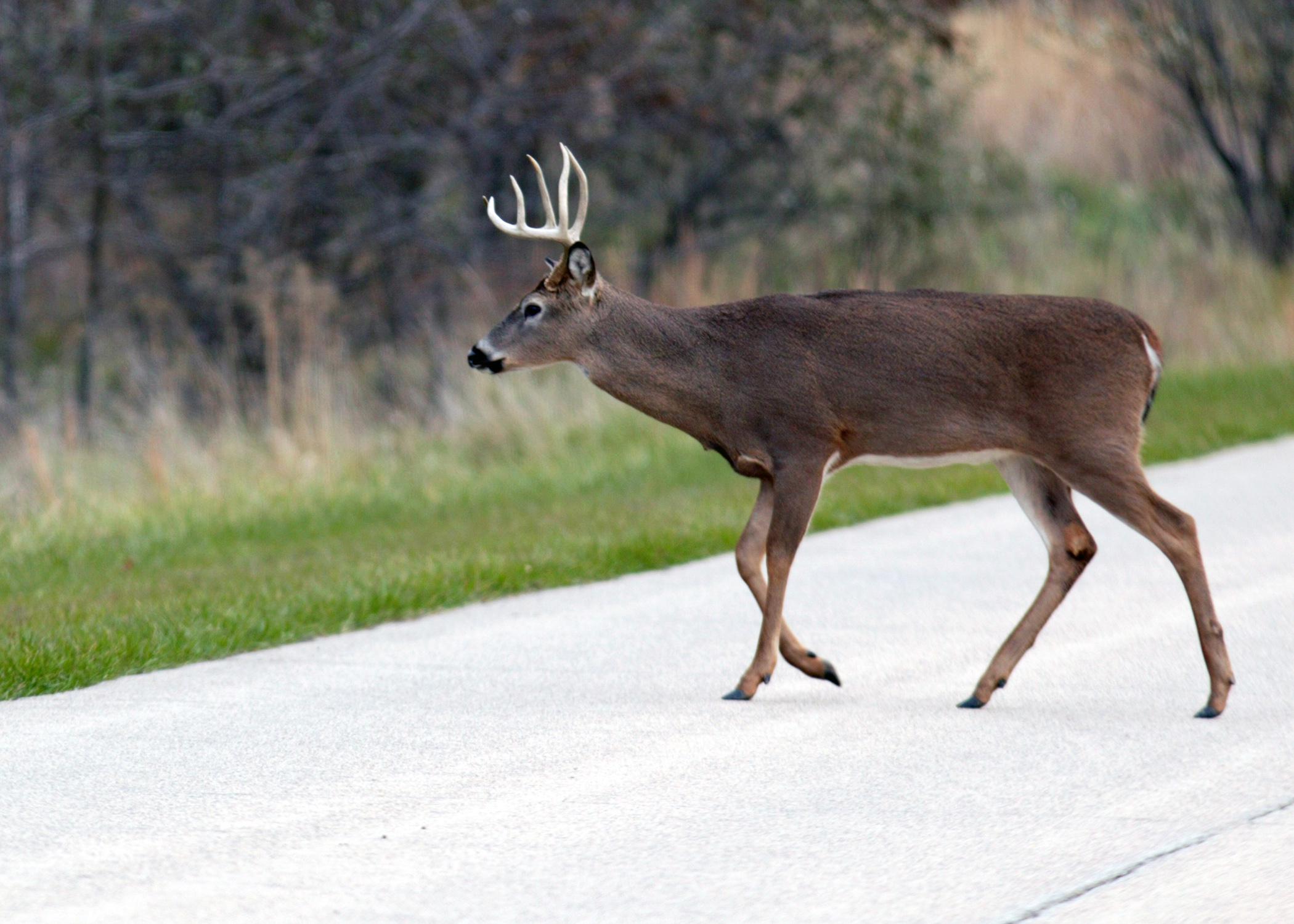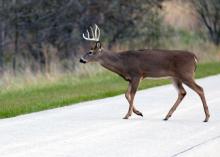Information Possibly Outdated
The information presented on this page was originally released on January 16, 2015. It may not be outdated, but please search our site for more current information. If you plan to quote or reference this information in a publication, please check with the Extension specialist or author before proceeding.
Watch out for wildlife while driving on roads, highways
MISSISSIPPI STATE -- Wildlife on roadways can be as hazardous to motorists as texting or reckless drivers.
State Farm Insurance reported Mississippi ranks sixth in the nation for wildlife-vehicle related accidents. More than one third of Mississippi’s 70,000 auto crashes are due to collisions with wildlife, specifically with white-tailed deer. One in 84 people statewide will be in a crash involving wildlife annually.
The average cost to drivers who incur damage related to wildlife crashes is $2,500. Wildlife-vehicle collisions also result in thousands of injuries and several deaths every year.
Mississippi’s highways are primarily rural. Understanding where wildlife may enter the road is a good first step in building awareness and vigilance on roadways. The Mississippi Department of Transportation identified several landscape characteristics that are good predictors of where wildlife and human activities might intersect. These include
- intersections of roads with creeks and drainages,
- areas with good habitat and forage near the roadside,
- places with a nearby water source, and
- long, wide, straight stretches of road.
The first three landscape characteristics make sense. The availability of forage and water close to the road is likely to increase the presence of animals.
The fourth one -- long, wide and straight stretches of road -- is less obvious. Under these conditions, motorists tend to feel safer and more confident and therefore accelerate. This increase in speed reduces the driver’s reaction time when an animal is on the road.
In urban settings, smaller animals, such as raccoons, porcupines, skunks, rabbits and squirrels, pose more of a problem to drivers. Roads that connect outlying sections of a city with the more populated downtown areas are often hotspots for wildlife activity. These roads may pass through rural areas that provide wildlife habitat.
Wildlife-vehicle collisions are more likely to occur between 7:00 p.m. and midnight and between 4:00 and 7:00 a.m. Right at dusk and dawn, many animals are active, and light levels are low. May and November are the peak months for these collisions.
To reduce the likelihood of colliding with wildlife on the road, follow posted speed limits. Monitor roadways where deer-crossing signs are posted. Reduce speed to allow more time to stop or slow down if an animal is in the roadway.
Second, drivers should stay alert and avoid talking or texting on cell phones, especially at dusk and dawn. Actively watch for wildlife on the road, in the ditch, on the shoulder and in the right of way. Headlights often will reflect off the animal’s eyes.
Pay attention to movement on or alongside the road. Also watch for flickering headlights or taillights of other vehicles or roadside reflectors that disappear and reappear. These may be signs of an animal crossing the road.
If a crash is inevitable, do not swerve. This could cause you to lose control of the vehicle or even overturn. Brake firmly and quickly and let up on the brake just before you hit the animal to prevent it from coming through the windshield.
If you hit an animal, do not approach it. Report the collision to highway patrol if your vehicle is disabled and report damage to your insurance company.
No one wants to be in a vehicle collision, especially with an animal. But with a little attentiveness and caution while driving on the roads and highways, most wildlife-vehicle accidents can be avoided.

Editor’s Note: Extension Outdoors is a column authored by several different experts in the Mississippi State University Extension Service.






